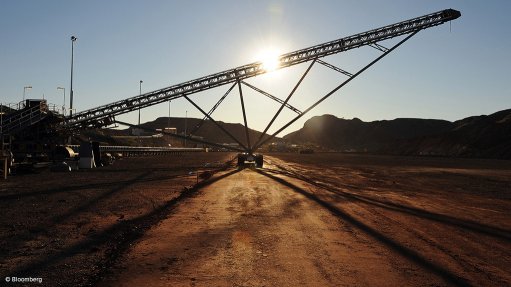
Photo by: Bloombeg
PERTH (miningweekly.com) – Embattled iron-ore miner Atlas Iron has reported a net loss after tax of nearly A$1.4-billion dollars for the financial year ended June, as iron-ore prices nearly halved and the miner was forced to shut down production.
The massive loss reported in 2015 compared with a net profit after tax of A$17-million in 2014.
Atlas had previously flagged a noncash impairment charge of A$1.07-billion, while the suspension and restructuring costs of its operations amounted to A$52.8-million.
Atlas in April suspended operations at its three mines in the Pilbara, owing to the volatile iron-ore market, but by June had restarted production after inking collaboration agreements with contractors at its Mount Webber, Abydos and Wodgina mines.
At the Wodgina and Abydos mines, Atlas agreed to a contractor collaboration model, where contractors could receive an uplift in their rates as the iron-ore price increased and would receive a total of 25% of applicable positive net operating cash flows.
The agreements at Abydos and Wodgina, and subsequently at Mount Webber, would deliver a breakeven price of $50/t.
Despite the production stoppages, Atlas reported record exports of 12.2-million tonnes for the year, compared with the 10.9-million tonnes delivered in 2014.
However, the average realised price for Atlas’s blend was down to A$59.96/t, compared with the A$100.51/t achieved in 2014, resulting in revenue decreasing by 35% year-on-year to A$718.5-million.
Underlying earnings before interest, taxes, depreciation and amortisation also decreased from the A$257.8-million recorded in 2014, to a loss of A$51.5-million.
Atlas MD David Flanagan said on Friday that the company had demonstrated its strong capability to be resilient and innovative in extremely challenging market conditions.
“Yes, the changing iron-ore market meant we have had to take large write-downs and that hurts. While Atlas can’t influence the iron-ore price, we have moved the needle on our cost base and are now seeing the results of the contractor collaboration model.”
Flanagan said the combined efforts of the company, its contractors, the Western Australian government and shareholders meant that Atlas was stronger than several of its competitors.